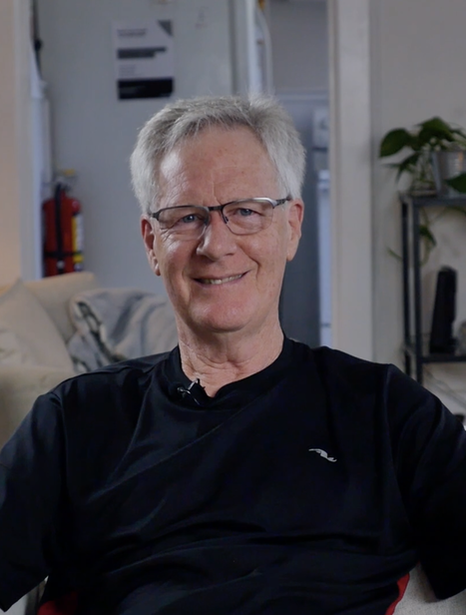Claudia Ongo Last but not least in our series on The Art of Connection is the practice of being responsive. Being responsive involves hearing and acknowledging the other persons’ view, feelings and values, while also being true to our own view, feelings, and values. When we can acknowledge and hear what the other person is saying, we can then begin to empathize, understand and keep open minded for connection with each other.
Be responsive differs from being reactive. Generally, reactions are quick responses initiated from triggered feelings, perceptions, and assumptions of the situation that often short-circuit our hearing to understand. The amygdala (emotional centre of the brain) is activated and if perceived to be threatened, then relational circuits quickly shut down. When this happens, it is a good practice to take a moment to assess what feelings are being triggered and take a breath before speaking or connecting to another person. This is often easier said than practiced! When communicating from a place of anger, anxiety, or fear, we inevitably block and side step the truth of the matter or our true needs. We are less likely to convey what we need and more likely go into fight, freeze or flee mode. In other words, everyone loses! However, there is good opportunity to correct the situation by taking courage to express the need behind the feelings. For example, “I feel sad that our need to understand each other did not happen when we last spoke, perhaps we can try again when we are both willing.” Being responsive is a position that not only allows us to repeat what we hear for clarity, but also gives us opportunity to state our feelings and ask for what we need. For example, a response may sound something like: You: ‘Let’s see, what you are saying is that you need more freedom to choose how you use your time, is that right? Other: Yes, exactly!! You: Oh, perhaps I haven’t been very clear, let me try again, I feel sad because I miss chatting and touching base with you. Would you be willing to consider choosing a time to meet me when it is convenient for both of us? Does Wednesday work? Here in this scenario, we are checking our understanding or perception of what is being said by another, and then adding what it is we need in a clear and direct manner. The aim of connecting is to work out how best we can meet each other’s needs without being prey to demands, judgements or blame shifting. In the same thread, we can check ourselves on how best we can meet our own needs without being predatory of others, without us victimizing others, demanding a specific response, judging their actions, and blaming others for our feelings. The practice of being responsive to others who have similar challenges as us may require us to openly sharing our own challenges as it relates to the conversation. Sharing our personal values, attitudes, values or events that are relevant helps to relate and reassure the other person they are not alone. Responding by relating to others is a way of reducing anxiety, especially when entering in with differing views. An example of this type of response, may be saying something like, ‘Like you, I never felt comfortable expressing myself in a group. ‘ Being responsive may involve asking open questions for information and/or develop a point. Open questions help us focus on the other’s general situation, feelings, and needs. A caution is to note is that ‘why’ questions that are directed at the other person often pressure for an explanation or express a sense of disapproval or criticism. Sincere questions will seek understanding and invite dialogue. For example, questions such as “Can you tell me what is confusing you?” or “What do you like about the new school?” Good questioning responses are open and promote communication, exploring what is blocking connection. Interestingly, the root word to responsible is response.* I love that ‘response’ is within this word because it inadvertently suggests that it is our responsibility to account for how we communicate and connect with others. !re we willing to take this up? Every time we communicate there is the opportunity to be intentional and practice some of the tips from this series. Learning to observe, empathize, and express needs are three ingredients that Dr. Marshall Rosenberg, founder of Non-Violent Communication (NVC) schools, has so effectively studied and shared with many organizations as a world peacemaker. I am grateful to know of his work, and it is my joy to share some of these strategies. Indeed the art of connection in our communication is experienced as JOY when we discover the reward of expressing and meeting each other’s true needs in our real life situations. *French word "responsible", itself coming from a Latin word "responsabilis", the past participle of "respondere", meaning "to respond". The word did not come to imply any measure of accountability until the middle 1600s. https://english.stackexchange.com/questions/345981/did-the-word-responsibility-come-from-the-two-words-response-ability/345987
1 Comment
12/25/2022 06:01:10 am
Enjoyed reading the article above, really explains everything in detail, the article is very interesting and effective. Thank you and good luck… This site is very helpful for me. I love that site and it is also an informative site
Reply
Leave a Reply. |
Blog Authors Christine oldingClaudia OngoBruno IerulloRichard PaulRob ReidJustin madoniaSteve OngoArchives
August 2023
Categories |







 RSS Feed
RSS Feed